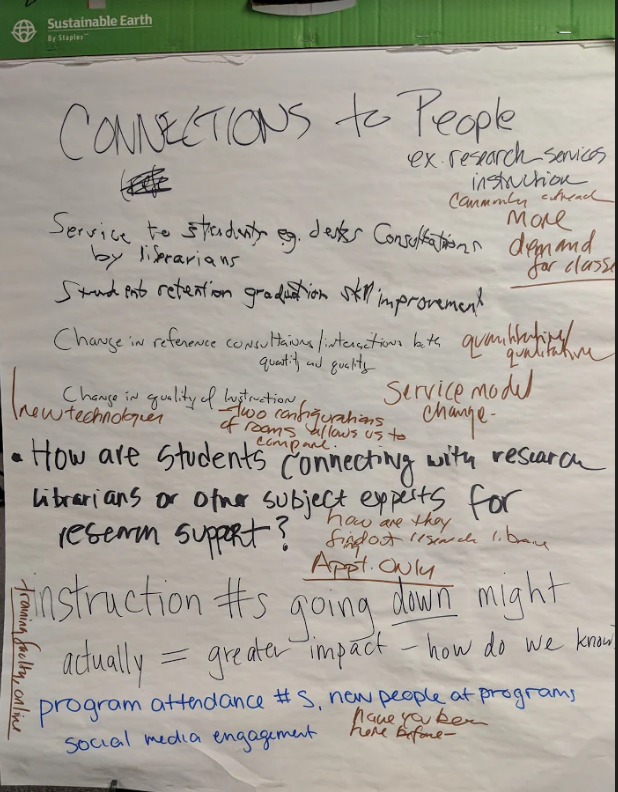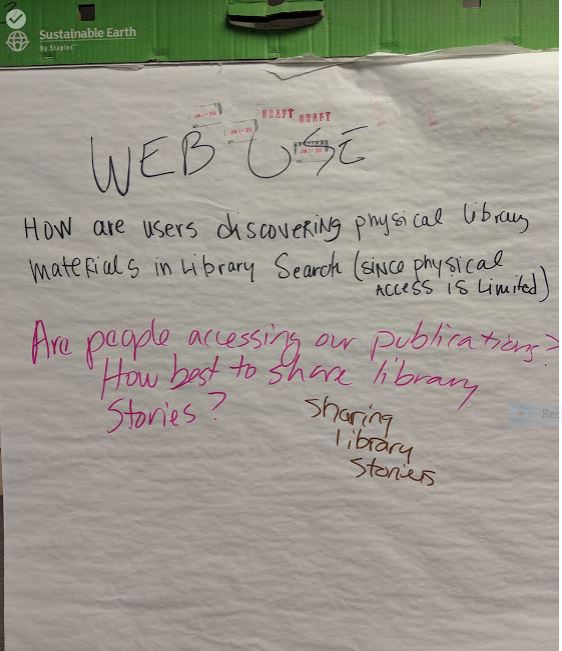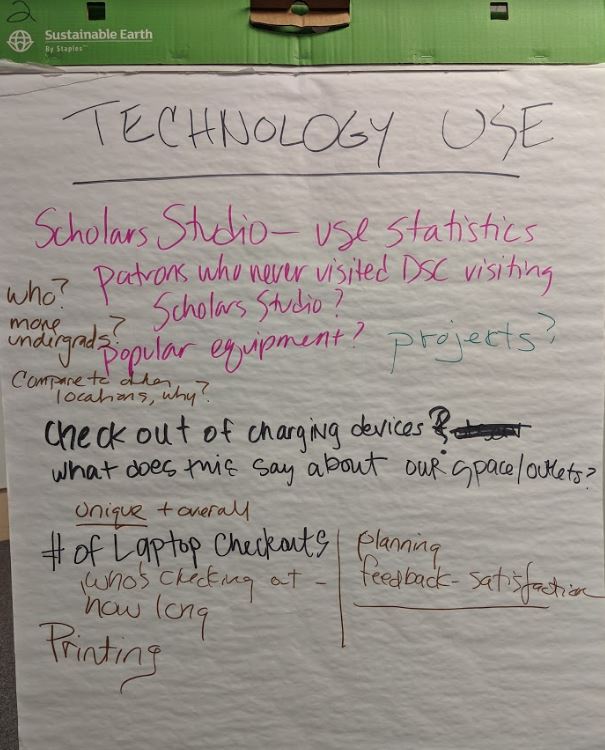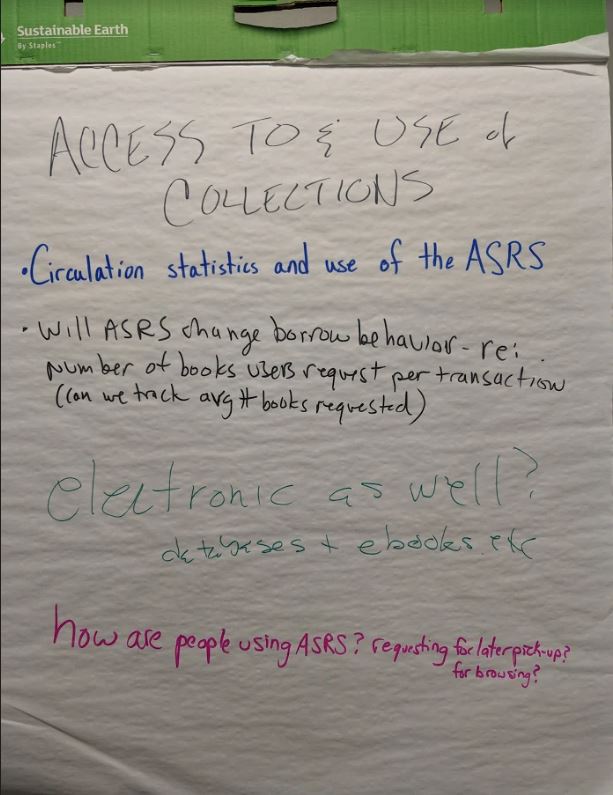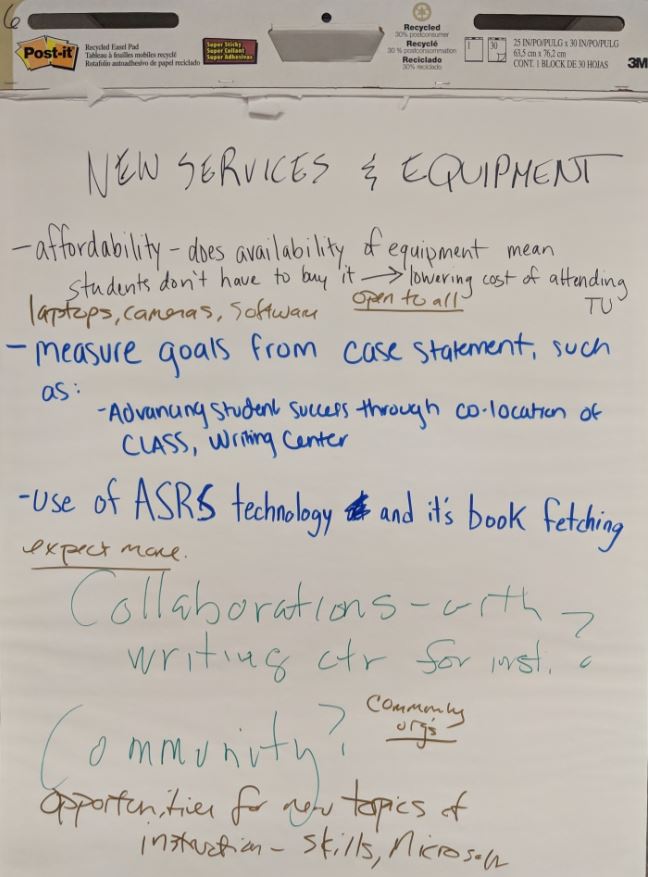In less than six months we will be moving into Charles Library, an environment that will transform how we think about libraries and the resources and services it provides. And how we provide access to those resources and services. In preparation, staff members from 7 departments & teams gathered to start brainstorming questions we’ll be asking about how the Library serves its community. What metrics will we use to best demonstrate the impact and value of the Library for Temple University, its neighborhoods, and the world?
We started with a reflective exercise, and asked ourselves these questions:
- In the area of your own current operational work, what will you want to measure and track as you transition to the Charles Library?
- What will be one important thing to measure as we demonstrate the library’s value and impact to the University?
The reflections generated lots of important, and creative questions – summarized here and included in the “rough” below. Some questions are more straightforward than others. As we determined, it’s easy to count, but numbers never do full justice to the real changes we’ll be seeing. And sometimes, smaller numbers do not mean less impact.
Connections to People
- How will reference interactions (basic, consultations) change, both in terms of quantity and quality
- How are students connecting with research librarians or other subject experts for research support?
- With the different styles of instruction space (traditional hands-on computer lab and more flexibly configured spaces), might we compare the effectiveness of instruction in each?
- Instruction numbers going down might actual equate with great impact. How do we know? If we implement new approaches, like training of faculty or online programming – we’d have more “reach” but numbers wouldn’t reflect that.
- Is our new programming space attracting new people? Our dedicated exhibition space will allow us to measure audiences more accurately, and we can start asking visitors if they are a first time attendee.
- Is social media engagement going up?
Space Use
- Are more patrons coming into the building? Where do they go?
- How are the various space types being used by students, graduate students and faculty?Do these new space types and technology offerings changing the perception of the library as a space primarily for undergraduates?
- How will the new meeting spaces provide opportunities for new types of workshops, for instance, on sensitivity and conflict resolution. These would be useful for guests as well as for Temple community.
- In the opinion of our users, are we providing a better overall space/facility than Paley? This would be hard to measure, but we might compare perceptions of first year students with more senior ones.
Access to and Use of Collections
- How will the ASRS be used? Will circulation go up or go down? Will patrons request books for pickup later? How many books will be requested at one time, and will those all get checked out?
Technology Use:
- How will the laptops available for check out be used and by whom? What is the duration of use? What types of equipment are the most popular?
- Will the increased visibility of the Scholars Studio affect how technology available there gets used? Will it attract new users, like undergraduates? If technology tools like 3-D printers, are offered elsewhere on campus, how does use of the Scholars Studio compare to those other locations?
- Are users satisfied with the technology offerings?
Web Use
- Since physical access is limited, how are users discovering physical library materials in Library Search?
- Are people accessing our publications via the website?
New Services and Equipment
- Can we demonstrate increased affordability? Does availability of equipment mean students don’t have to buy it, lowering the cost of attending Temple. This would include equipment such as laptops, cameras and specialized software.
- How will we take advantage of new potential for collaborations with the Writing Center and community organizations. How can we measure goals from our case statement, such as “Advancing student success through co-location of CLASS and Writing Center?”
- What are the best ways to share library stories?

